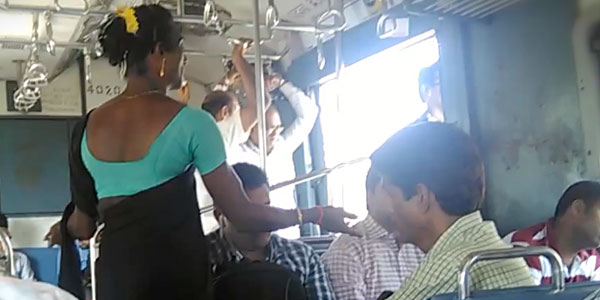
Who are hijras?
Hijras are those transgenders who take an oath in a formal ritual to join the hijra community which has its own culture and rituals, acts as quasi family for its members providing them with livelihood and social security in times of illness and old age. However while all hijras are transgenders, all transgenders do not join the hijra community or identify as hijras. Like transgenders, hijras believe they are women trapped in men's bodies and make strenuous efforts to do away with their male identity in many ways. This is done by outwardly identifying as female through gestures and clothes while keeping their sex organs intact or by removing their penis either through a ritual ceremony called 'Nirvan' or by undergoing a Sex Reassignment Surgery (SRS).
Those transgenders who biologically change their sex organs are called transsexuals. There are some hijras who want to get a surgery, get implants and transform completely into a woman. But there are others who don't want either gender identity and thus regard themselves as the third gender.
Are hijras specific to India?
"The existence of hijras is limited to India and parts of South Asia," says Murugesan, a doctoral student at the Tata Institute of Social Sciences (TISS), who works closely with Humsafar Trust. Unlike many other countries where transgenders can live independently as they are accepted by family and society, in India, this is largely absent, and this pushes them into seeking a parallel support system.
What is the community like?
Like the Indian caste system, hijras too have communities called gharanas. Every gharana has a guru who mentors a hijra until they can guide new members. Usually, those who are rejected by their families join a gharana.
Does every transgender join or need to join the hijra community?
Those who find acceptance in their families may not feel the need to join the community. "These days, there is greater openness among families," says Murugesan. There are others who prefer to stay out of the hierarchical structure of the guru-chela tradition of a gharana and not join any community.
Why is the hijra community revered at some places?
In Hindu mythology, the man-woman combination is a powerful one and there are many deities who occupy this in-between space. Hindu hijras have been employed in temples and their earliest profession was that of ritual performers. They performed at occasions like the birth of a child or at a wedding.
Hijras are revered in parts of India for different reasons. "In Jammu and Kashmir they perform rituals and take marriage proposals to families," says Ankur, a doctoral student from TISS. "In north India and Gujarat, they are revered as they are perceived as demi-gods. In Chennai where they are known as aravani, their clout is considerable and they have more rights."
Why are hijras usually perceived as aggressive?
Because they are at the receiving end of immense discrimination, some of them tend to appear aggressive and irreverent, and this may alienate some people. If they are treated with respect and accepted as they are, they will not appear so.
Why do many hijras become sex workers?
Since hijras are marginalized, many are forced into begging and sex work to earn a livelihood.
Historically, what are the other kinds of professions that hijras were engaged in?
Abhina Aher, Programme Manager, India HIV/AIDS Alliance says, "The hijra community occupied prominent positions before the British rule—they were beauticians, fortune tellers and consultants to the kings. But the Britishers established a law under the Criminal Tribal Act 1871 and labelled them a criminal tribe. They were considered a threat by the British. That perception continues even in modern times."
What are the other professions that hijras are a part of?
Hijras are taking up new professions and even turning entrepreneurs. Some have won elections. Many hijras have chosen to become activists and social workers as they understand the pain of marginalized groups.
Why don't we see more hijras living around us?
Hijras face discrimination at every level. "Housing is a very big issue. It is very difficult to find a place to stay. Even in a chawl, hijras are charged three times the usual rent," says Urmi Jadhav, Hijra Community Representative at Humsafar Trust. "It is not possible to make longterm financial investments, as most banks do not allow hijras to even enter them."